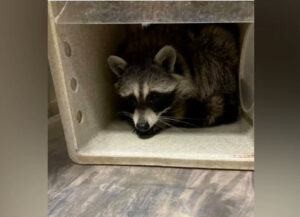 Getting wildlife such as raccoons and squirrels into a homes’ attic is unfortunately commonplace, but how do they actually get into your home? Sometimes they make an entry point in a soundly built structure, but more often they take advantage of pre-existing damage or unprotected areas that allow them to easily access your home. In this article, we’ll look at the most common entry point into your home wildlife use.
Getting wildlife such as raccoons and squirrels into a homes’ attic is unfortunately commonplace, but how do they actually get into your home? Sometimes they make an entry point in a soundly built structure, but more often they take advantage of pre-existing damage or unprotected areas that allow them to easily access your home. In this article, we’ll look at the most common entry point into your home wildlife use.
Raccoons are powerful animals with great gripping and ripping ability. They will commonly just tear a hole right through a roof. They can get through shingles and tarpaper easily and even the wood below it regardless of whether it’s a solid wood board, plywood, or OSB (oriented strand board). The condition of the roof however can make it much easier for a raccoon to make entry. To this end, holes are most often torn at the roof edge or around chimneys which are areas that are more prone to weather damage. The worse the weather damage, the more likely an animal will take advantage of the weakened area. The same goes for rotted out fascia boards that can be taken advantage by both squirrels and raccoons.
Another common entry method is to use unprotected vents. Peak vent louvers can be pulled open by raccoons or chewed through by squirrels. Ridge cap vents can be easily torn apart by raccoons in a similar manner to the common 9″x 9″ static roof vents found on almost all roofs. Powered roof vents are by far the most common vent entry for both raccoons and squirrels. These vents have only a thin “window screen like mesh” in them to keep out leaves and insects. Without a protective guard they are basically an open door into your homes’ attic. The good news is that all of these vents can be secured by a wildlife professional such as us by using various techniques specific to the vents style.
The last of the three common entry points are where upper level soffiting joins lower level roofs. We call this a roof/soffit joint. Modern soffiting is thin vinyl or aluminum panels that interlock and are held up by a narrow track mounted to the wall and fascia. It looks solid from the ground but is very weak when it meets the roof at its end where it’s not supported. Worse yet, it’s not uncommon for the last piece to stop short of where it should be thus making a sizable gap. This gap is sometimes big enough to allow birds and squirrels to enter through without any damage being done.
Now that we covered the ‘big three’ (hole torn into roof, roof vents, and roof/soffit joins) we need to address the open entry point. Weather damaged fascia or soffit that has fallen down is leaving open doors. Speaking of open doors, don’t leave them open! Garage doors both large and small, doors into the home, and pet doors set into those external doors can all allow animals to basically walk into your home. Keeping them secure can prevent waking up to an unexpected visitor.
In summary there are preventative measures you can take to help reduce animal entry. Call us today at 877-924-7878(PEST) for an inspection and estimate. Remember prevention is always easier and cheaper than remediation.
